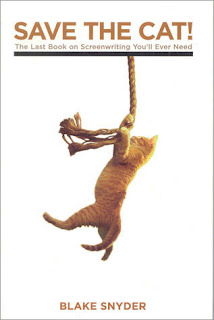There are two entrenched ways of thinking about story openings.
Folks either think a story needs to open with setting and a detailed introduction to the characters or they think that any description in the first, say, quarter of the story should be bare-bones and that backstory (/infodumps) should be kept, by and large, for the last half of the story.
I tend to agree that infodumps should be avoided at the beginning of a story but that often leaves the writer with a problem. How do we work in backstory when it's needed at the beginning to set the stage?
John Yeoman (@yeomanis) has written what has to be hands-down the most useful article on how to work backstory in at the beginning I've ever read. Which comes as no surprise since he was guest posting on one of my favorite blogs--Elizabeth S. Craig's blog, Mystery Writing Is Murder.
6 Ways To Work Backstory In At The Beginning
John Yeoman closes by writing:1. The naive stranger
A favourite device is to have a stranger ask a naive question. “‘Sir, why is the village school built next to a jail?’ Old Tom smiled. ‘It’s a long story,’ he began...”
Only, don’t make the story too long!
2. The helpful gossip
Whenever that great rival to Sherlock Holmes, Dr Thorndyke, was presented with a village mystery he - and his foil, Jervis - would dine in the local pub. Inevitably, a garrulous maid or landlord would volunteer a vital clue.
Postal workers, shopkeepers, doctors, priests and other community insiders are great volunteers of background ‘stuff’. (But avoid prurient old ladies who lurk behind curtains. The world has room for only one Miss Marple.)
3. The ‘official’ tour guide
If somebody is playing host, they can plausibly entertain their guests with anecdotal histories. A tree on a hill, a book upon a shelf, any object that draws attention to itself can provoke a story.
‘My grandfather carried this with him at the Somme...’
A tourist brochure, newspaper clipping or public poster can also disclose 'stuff' in a casual way, without disrupting the narrative. ‘Official’ information appears to come to the reader unmediated by interpretation, so it has a high truth value.
This can usefully mislead the reader - say, in a mystery story - where the official information, accepted by everyone, turns out to be wrong.
I have just had great fun writing an historical mystery tale (soon to be on Kindle, Amazon permitting). It proves, indisputably, that Queen Elizabeth I of England was not a red head. The records are wrong.
4. The chance remark
. . . .[L]et the background details unfold in dialogue, by way of chance remarks.
“‘You don’t want to go there,’ the garage attendant said as he checked my oil. ‘They never did find her body.’”
Further remarks can develop that back story - and any small event whatever can cue a chance remark.
. . . .
5. Break it up with action
If granny really must dump the whole history of the family on the reader, break it up. Add conflict or action. Perhaps an exasperating child keeps changing the subject. Or a pet cat gets tangled in her knitting.
While granny copes with the distractions, the reader will stay with the story - if only to see the wretched child or cat get their comeuppance. (Five Ways to Handle Stuff and Other Nonsense)
‘Stuff’ doesn’t have to be nonsense. We need ‘stuff’ to create a context. What the reader doesn’t need is a lot of digressive details that are unrelated to the plot and that they’ll never remember anyway.I hope John Yeoman won't mind if I add a sixth way:
6. Honored, yet grumpy, guest/Talk to a reporter
This is similar to John Yeoman's #3, the official tour guide, but I thought I'd include it anyway.
In one of my works-in-progress, I needed to insert an information dump at the beginning. It didn't work--I knew it didn't--and if there had been any doubt my beta readers firmly, but kindly, removed it. (Love them!)
Then I read a novel in which the protagonist talked to a reporter and necessary information was introduced. I thought the devise worked. (This demonstrates the importance of reading like a writer.)
In my WIP my protagonist, a zoo director, gives the Mayor a tour around the zoo and has to explain no end of things. I also use this tour to set up the Mayor as an antagonistic force which allows me to introduce one of the core problems facing the protagonist.
There are many different ways to sneak information in at the beginning of a book. Which ones are your favorites?
Other articles you might like:
- 8 Tips From Chuck Wendig On How To Read Like A Writer- Author Solutions: The New Carnys?
- Structured Procrastination: Procrastinate And Get Things Done
Photo credit: "read on the wall" by MarioMancuso under Creative Commons Attribution 2.0.




